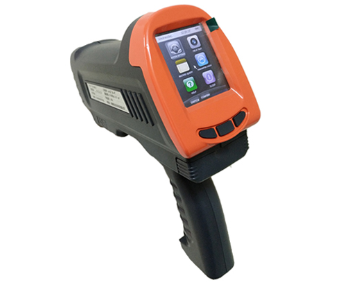Testing Equipments Supplier
 ISO9001:2015 Certified
ISO9001:2015 Certified  ISO9001:2015 Certified
ISO9001:2015 Certified Views: 34 Author: Site Editor Publish Time: 2019-12-20 Origin: Site








Retroreflectometers have always been valued by people, especially drivers, which means that they can play an important role in road safety. What function does a retroreflectometers have? When using a retro reflector, it is safe. Consider:
What are the things that need to be avoided?
Why do we need to use a retroreflectometer?
How the retroreflectometers works?
Precautions for using retroreflectometers

So far, tools have been available to effectively quantify the effects of weather, wear and chemicals on road quality, and the number of times a road surface that needs to be maintained or replaced can be modeled. Tools that are not familiar to road engineers are used to measure and model the life of retroreflective elements painted on roads or embedded in roads to help guide the driver at night.
The science of retroreflective systems is still in its infancy, but is developing rapidly. The visual observation of retroreflective elements by human observers has been replaced by portable retroreflectors and on-board measurements to provide reproducible data that is more compatible with data management tools such as computer simulation. For many road construction and maintenance companies, tracking and retrograde measurement are still a strange topic, but do not need to spend a lot of time.
Accident data from the Highway Safety Information System (HSIS) (a multi-state database) shows that although only 25% of travel occurs at night, about 55% of fatal accidents occur during the night. At least part of this difference is due to insufficient signs and marks and poor maintenance. This statistical data helps explain why the Unified Traffic Control Equipment Manual (MUTCD) requires that highway signs visible at night should be reflective. That is, they should reflect light back to the general direction of the light source. Retroreflectivity is only a measure of how well a marker achieves this efficiency. Retroreflection measurements with retroreflectors help ensure that new highways are marked to the established standards for increased safety. retroreflectors can also help engineers estimate when to replace retroreflective roadside components. Premature replacement of these components increases maintenance costs; replacing them too late can jeopardize safety, driving comfort and infringement.
Similarly, many state and municipalities that have signed road signs have begun to provide bonuses based on the quality of the lane signs that declined after installation and a few years after installation. This is an advantage if entrepreneurs engaged in road marking can provide reliable data indicating that their marking continues to correspond to the indicated retroreflective value.
Typical retro-reflectors (such as cube corners or transparent microspheres) have structures that produce multiple reflections. Regardless of the mechanism used, the ideal retro-reflector will reflect all light directly to the light source. Fortunately, this efficiency is not only impossible for road applications, but also impractical. In order for the retroreflection to be useful, the driver must see it. Not only is it impractical to place the ideal position of the headlight on the driver's forehead between the eyes, but also to meet the resistance accepted by the market.
In fact, the headlights are limited to a non-optimal position for the driver to see the retroreflected light. Therefore, standard illumination and viewing geometries have been defined to objectively evaluate the performance of different materials and mounting methods. A key element of this assessment is the understanding of the concept of light source illumination intensity.
The retro-reflector generates, uses, and emits radio frequency energy. If it is installed and used in accordance with the instructions, it may cause harmful interference to radio communications. However, there is no guarantee that interference will not occur at a particular location. If the retro-reflector is interfering with radio or television reception, you can confirm this by turning the device off and then on to cause the user to correct the interference caused by one or more of the following factors:
Reposition or reposition the receiving antenna.
1. Increase the distance between the retro reflector and the receiver.
2. Connect the retro reflector to a different electrical outlet from the receiver.
3. Consult the dealer or an experienced radio/TV technician for help.
For safety reasons, do not expose the battery to high temperature or fire. There is a danger of explosion. Do not expose the battery to heat or direct sunlight. The battery can be stored in a temperature range of -10 ° C to + 60 ° C (14 ° F to 140 ° F). However, the recommended storage temperature is 0 ° C to + 30 ° C (32 ° C to 86 ° C) ° F. Taking into account the battery life, they will discharge between them. Before charging, let the hot battery cool down. When handling or storing the battery, please pay special attention not to short-circuit the battery. If the battery is broken, do not put the battery in the charger. Using damaged batteries can cause electric shock or fire. The battery must be protected from shock. Do not open the battery, and do not store it in a dry and clean place. For environmental reasons, do not use batteries with household waste.
In order to ensure that the calibration of the retroreflectometer is correct, it is important that the calibration target on the surface is clean and in good condition. Keep the calibration target protected and be careful not to touch the calibration target (reflective surface). If the surface is stained, scratched, or damaged, the calibration target must be replaced.
Obviously, the retro reflector has the function to make people pay for it at a low cost. After all, safety is the most important. If you are looking for a good quality and reasonable price of retroreflectometer, NANJING T-BOTA SCIETECH INSTRUMENTS&EQUIPMENT CO.,LTD can provide you with the best